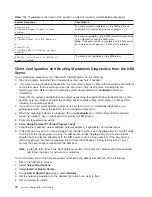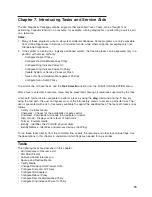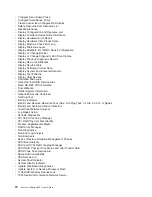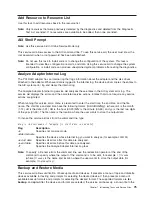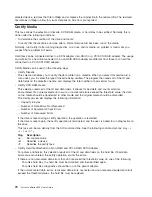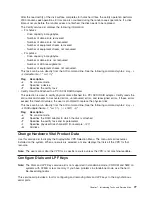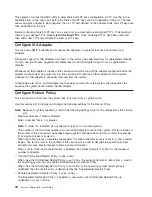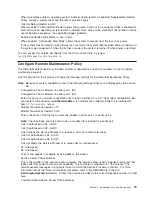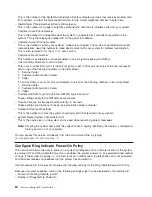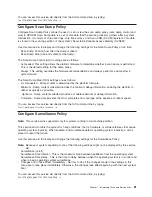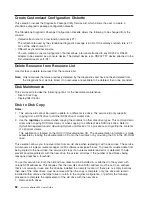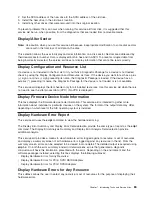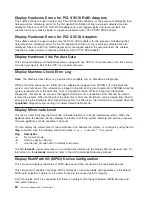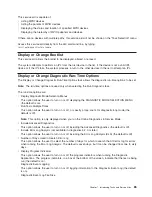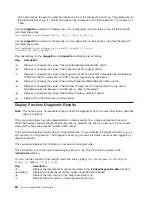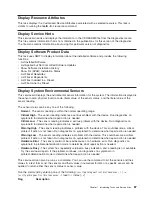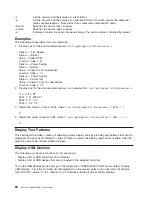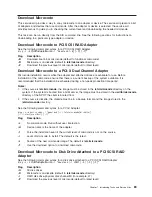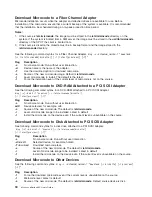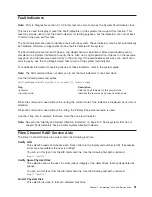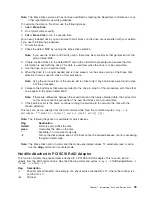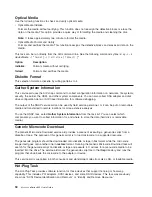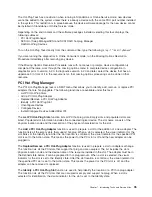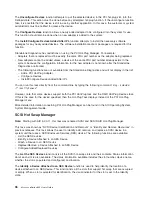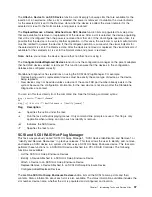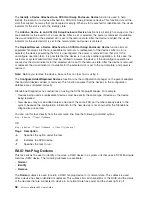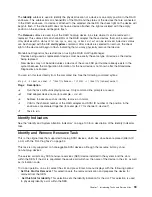
Display
Hardware
Errors
for
PCI-X
SCSI
RAID
Adapters
This
subtask
allows
the
user
to
select
only
PCI-X
SCSI
RAID
adapters
for
the
purpose
of
displaying
their
hardware
errors.
Hardware
errors
for
the
first
generation
children
of
any
resource(s)
selected
are
also
displayed.
Since
not
all
PCI-X
SCSI
RAID
adapter
errors
are
logged
against
the
resource
itself,
this
subtask
functions
to
make
it
easier
to
diagnose
problems
with
a
PCI-X
SCSI
RAID
adapter.
Display
Hardware
Errors
for
PCI-X
SCSI
Adapters
This
subtask
allows
the
user
to
select
only
the
PCI-X
SCSI
adapters
for
the
purpose
of
displaying
their
hardware
errors.
Hardware
errors
for
the
first
generation
children
of
any
resource(s)
selected
are
also
displayed.
Since
not
all
PCI-X
SCSI
adapter
errors
are
logged
against
the
resource
itself,
this
subtask
functions
to
make
it
easier
to
diagnose
problems
with
a
PCI-X
SCSI
adapter.
Display
Hardware
Vital
Product
Data
This
service
aid
displays
all
installed
resources,
along
with
any
VPD
for
those
resources.
Use
this
service
aid
when
you
want
to
look
at
the
VPD
for
a
specific
resource.
Display
Machine
Check
Error
Log
Note:
The
Machine
Check
Error
Log
Service
Aid
is
available
only
on
Standalone
Diagnostics.
When
a
machine
check
occurs,
information
is
collected
and
logged
in
an
NVRAM
error
log
before
the
system
unit
shuts
down.
This
information
is
logged
in
the
AIX
error
log
and
cleared
from
NVRAM
when
the
system
is
rebooted
from
the
hard
disk,
LAN,
or
standalone
media.
When
booting
from
Standalone
Diagnostics,
this
service
aid
converts
the
logged
information
into
a
readable
format
that
can
be
used
to
isolate
the
problem.
When
booting
from
the
hard
disk
or
LAN,
the
information
can
be
viewed
from
the
AIX
error
log
using
the
Hardware
Error
Report
Service
Aid.
In
either
case,
the
information
is
analyzed
when
the
sysplanar0
diagnostics
are
running
in
Problem
Determination
Mode.
Display
Microcode
Level
This
task
is
used
to
display
the
microcode
or
firmware
levels
of
currently
installed
resources.
When
the
sys0
resource
is
selected,
the
task
displays
the
levels
of
both
the
system
firmware
and
service
processor
firmware.
sys0
may
not
be
available
in
all
cases.
You
can
display
the
current
level
of
the
microcode
on
an
adapter,
the
system,
or
a
device
by
using
the
AIX
diag
command.
See
the
following
command
syntax:
diag
-c
-d
device
-T
"disp_mcode"
Flag
Description
-c
No
console
mode.
-d
Used
to
specify
a
device.
-T
Use
the
disp_mcode
option
to
display
microcode.
The
AIX
lsmcode
command
serves
as
a
command
line
interface
to
the
Display
Microcode
Level
task.
For
information
on
the
lsmcode
command,
refer
to
the
AIX
Commands
Reference
manual.
Display
MultiPath
I/O
(MPIO)
Device
Configuration
This
service
aid
displays
the
status
of
MPIO
devices
and
their
connections
to
their
parent
devices.
This
service
aid
is
capable
of
sending
SCSI
commands
on
each
available
path
regardless
of
the
default
MPIO
path
algorithm.
Therefore,
it
is
useful
for
testing
the
unused
path
for
integrity.
Run
this
service
aid
if
it
is
suspected
that
there
is
a
problem
with
the
path
between
MPIO
devices
and
their
parent
devices.
84
Eserver
pSeries
655
User’s
Guide
Summary of Contents for p 655 series
Page 1: ...pSeries 655 User s Guide SA38 0617 03 ERserver...
Page 2: ......
Page 3: ...pSeries 655 User s Guide SA38 0617 03 ERserver...
Page 10: ...viii Eserver pSeries 655 User s Guide...
Page 14: ...xii Eserver pSeries 655 User s Guide...
Page 16: ...xiv Eserver pSeries 655 User s Guide...
Page 24: ...6 Eserver pSeries 655 User s Guide...
Page 32: ...14 Eserver pSeries 655 User s Guide...
Page 36: ...18 Eserver pSeries 655 User s Guide...
Page 90: ...72 Eserver pSeries 655 User s Guide...
Page 144: ...126 Eserver pSeries 655 User s Guide...
Page 208: ...190 Eserver pSeries 655 User s Guide...
Page 214: ...196 Eserver pSeries 655 User s Guide...
Page 217: ......

